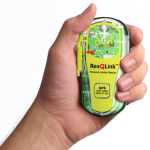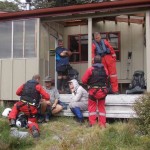- 05Mar

"ResQLink PLB a small and effective device I could not imagine ever going trekking again without" - Survivor Story
This is a real story as to how the personal locator beacon works around the world saving lives everyday.
The example in this story is how and Australian coded beacon purchased in Australia was activated by a group of Australian trampers in the Nelson lakes National Park on New Zealand's South Island.
From activation to the sighting of the Nelson Marlborough Helicopter it took just over an hour.
AMSA and RCCNZ Advise: Once you have set off the PLB, leave it on and stay in one place if at all possible. Wait and be patient. As soon as AMSA or RCCNZ receive the alert, they will launch a rescue, but it may take some time for rescuers either by sea or land to arrive.
Extract from the ACR Survivors Stories:
Name: Barry Ingham Product
Name: ACR ResQLink PLB
Date of Rescue: 01/23/2014
Saved By: Nelson Marlborough Rescue Helicopter
Beacon Purchased From: Brisbane, QLD, Australia
Lives Saved: 1
We were a group of five on a ten day tramping trip in Nelson Lakes National Park, south of Nelson on New Zealand's South Island. On the first day of the trip one member developed a respiratory infection which became increasingly more severe as the afternoon progressed. He eventually could no longer carry a pack and was having increasing difficulty walking, even without his pack.
We camped the night in John Tait Hut in the Travers Valley. During the night his condition continued to deteriorate and he was having difficulty breathing.
Fortunately, another tramper in the hut was a Doctor and he assisted our friend during the night.
The next morning the Doctor advised us set off our emergency beacon and have our friend evacuated to hospital in Nelson as quickly as possible.
This we did and the Nelson Marlborough Rescue Helicopter arrived a little over an hour later.
My beacon was an ACR ResQLink PLB. Our friend was accompanied in the rescue helicopter by another member of our party and taken directly to Nelson Hospital where he was assessed and treated accordingly. The manner in which the rescue exercise was carried out was exemplary and it boosted my already high opinion of the way the Kiwis do things. I had asked the other member of our party who was accompanying our sick friend to call my wife in Brisbane, Australia and advise her of the circumstances, as she was the first point of contact on my beacon registration.
By the time he was able to make the call my wife had already been contacted twice by the Australian Search and Rescue Authorities (AMSA); once to confirm our location and a second time to explain the circumstances of the rescue and the person involved.
I cannot speak too highly of the professionalism and efficiency with which the whole rescue exercise was conducted by the New Zealand and Australian search and rescue authorities and the Nelson Marlborough Rescue Helicopter service. Their efforts were greatly appreciated and our sincere thanks go to all concerned.
To the Employees of ACR:
A sincere thank you for your efforts in developing and marketing your range of emergency contact devices. The ResQLink PLB is now such a small and effective device I could not imagine ever going trekking again without one. It is the sort of device we expect to carry around in our back packs for years and never use. However I am doubly reassured now of the value of having one. Again, many thanks.
As demonstrated, having a PLB, be it Australian or New Zealand coded, when activated, both countries' Rescue Coordination teams work as one in the interest of saving lives.
Always remember to register your beacon:
Australian Coded: Australian & New Zealand residents
New Zealand Coded: New Zealand Residents



